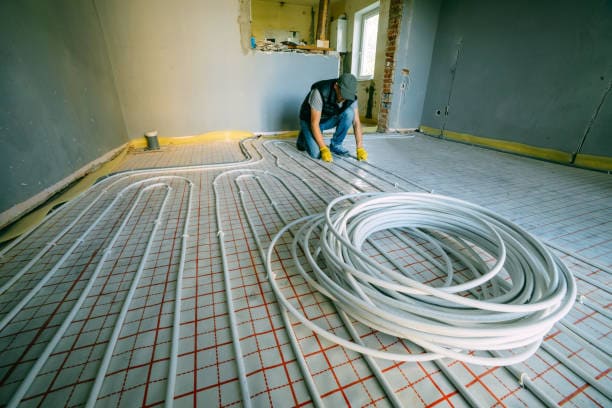Floor heating systems thrive on uniform heat distribution across the surface to provide the most comfortable feeling. The distributed heat, better known as radiant heat is a result of using the right types of thermostats for floor heating systems. Thermostats are energy-saving devices that help control the temperature and maintain it uniformly at a certain level according to the conditions.
Not all thermostats are alike, even though these might look the same functionally. For the floor heating system, some specialized thermostats can help maintain radiant heat. Since the thermostat offers different options, you must know which ones serve your purpose the best according to the flooring type.
The specialty of Radiant floor heating systems
Radiant floor heating systems use electromagnetic thermal waves to heat the floor instead of heating the air to keep the floor warm. The heat waves travel through the flooring and radiate back after some objects like furniture and other installations on the floor absorb the energy.
The back-and-forth transmission of heat waves warms up the entire space. Electromagnetic waves store energy until hitting against any object when it releases the energy in the form of heat. Heat can radiate from the walls, floors, and furniture.
Thermostats for radiant floor heating work differently
Thermostats for radiant floor heating work differently than traditional thermostats used for forced air heating systems. Thermostats are temperature sensitive and work by sensing the temperature of the surroundings, but the manner of sensing temperature depends on the type of heating system. Since traditional heating systems heat the air, the thermostats of such systems sense the air temperature during their operation. However, since radiant floor heating systems do not heat the air but send across electromagnetic waves packed with energy that heats the floor, the thermostats are guided by the floor temperature.
The modality of thermostat operations
To control floor heating, there are two options available depending on the nature of the heating. Some systems heat the floor, while other systems heat the home. The thermostat probe senses the heat depending on the type of heating system. Systems that heat the floor use thermostats with a probe placed under the floor that sends signals to the thermostat for switching on or off.
For systems that act as the primary source of heat, the thermostats should use an air probe along with a floor probe for measuring the temperature precisely.
Determining the number of thermostats for the system
Depending on the scheme of heat control, you can decide on the number of thermostats to use. For individual heat control of the rooms, you must install a thermostat in each room. However, a Smart thermostat allows connecting several sensors to the unit while creating a customized heating experience for each room. Since Smart thermostats are expensive and require advanced technological support, the zoning system of heat control is a more affordable and effective option.
Multi-zone heat control
Multi-zone heat control involves dividing the entire space into different zones, with each zone maintaining different temperatures. For example, you can consider each room a separate zone and install a thermostat and a probe n each zone to regulate the floor heating. Having multiple zones allows more flexibility as you can set the heat level according to the size of the space to ensure optimal heating that saves costs.
Since managing several thermostats can be a nightmare for homeowners, many newer systems have a control panel set up on the wall or app-based control panels that you can operate from your Smartphone.
For hydronic heating systems that use the heat generated from water to heat the floors, the thermostats use multiple probes for sensing the floor temperature and the temperature of the water heater.

